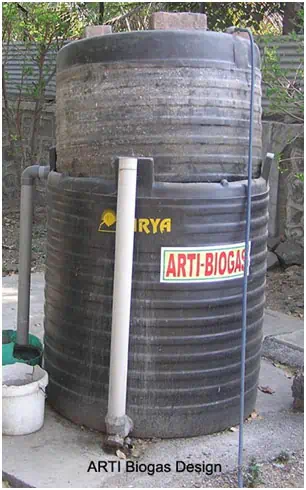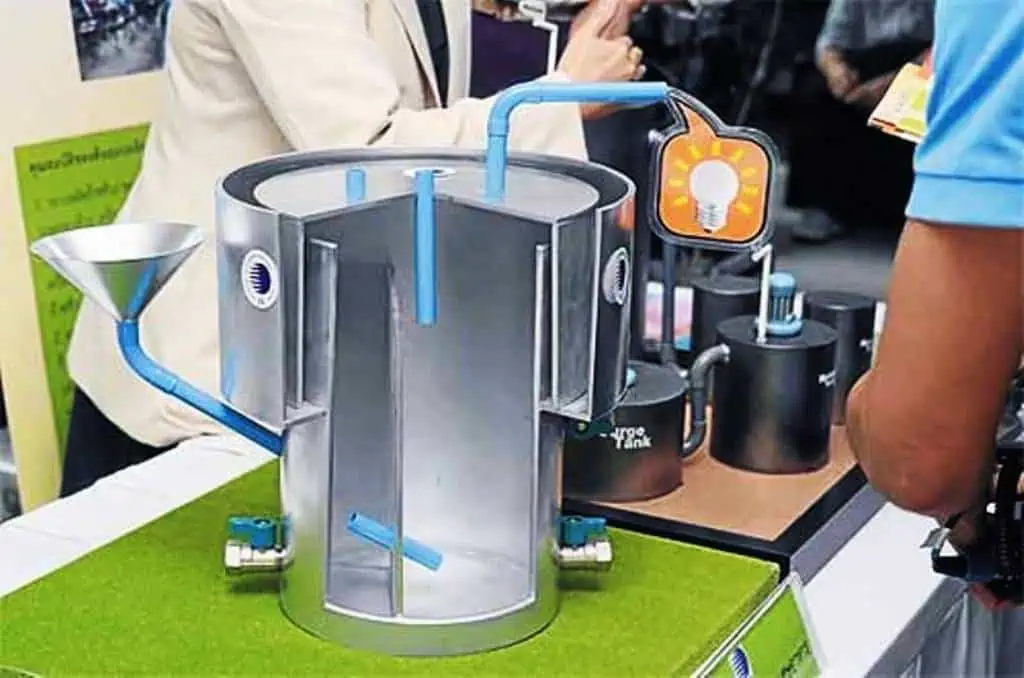ARTI biogas digester using waste foodstuffs

Many people live in urban areas and don’t have livestock. So people cannot utilise the larger biogas systems discussed elsewhere. If you live in a built-up area, the ARTI biogas system is for you!
The Indian Appropriate Rural Technology Institute (ARTI) has developed a small biogas digester that uses starchy or sugary wastes as feedstock, including waste flour, vegetable residues, waste food, fruit peelings, rotten fruit, oil cake, rhizomes of banana, canna (a plant similar to a lily but rich in starch), and non-edible seeds.
These household digesters made from cut-down high-density polyethene (HDPE) water tanks have a small footprint. People can use a heat gun to make them using standard HDPE fittings.
The standard ARTI biogas plant uses two tanks, with volumes typically around 0.75 to 1 m3, and the household needs a space about 2m square and 2.5 m high.The smaller inverted tank on top is the gas holder and sits inside the larger fermenter, so it telescopes inside. It is the fermenter that holds the mixture of decomposing feedstock and water. The feedstock inlet is the vertical white tube. The Grey pipe on the left-hand side is the overflow.
For best results, blend the feedstock (stuff you put in the fermenter) into a smooth slurry. The starter mix can be cattle dung combined with water or waste flour. Over a few weeks, the biogas fermentation grows by feeding the ARTI biogas plant. It will then provide a steady supply of gas.
This is typically 250-500 grams of gas per day from 1-2 kg (dry matter) feed. An inlet is provided for adding feedstock and an overflow for removing the digested residue. The ARTI biogas digester should be set up in a sunny place close to the kitchen. Only a short section of pipe is then needed to take the biogas to the kitchen.
Full written instructions to build an ARTI biogas digester are available in our download section, and there is also a great video showing how to make this digester.


Leave a Reply
You must be logged in to post a comment.